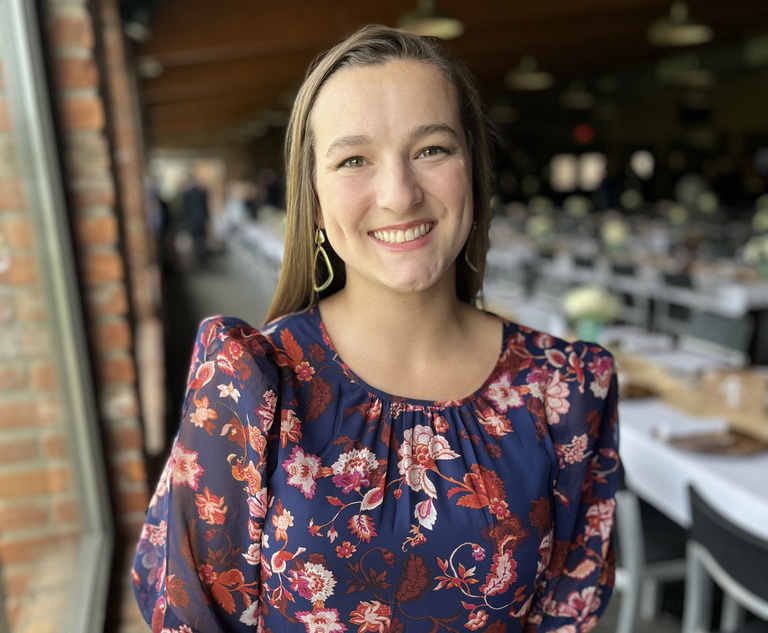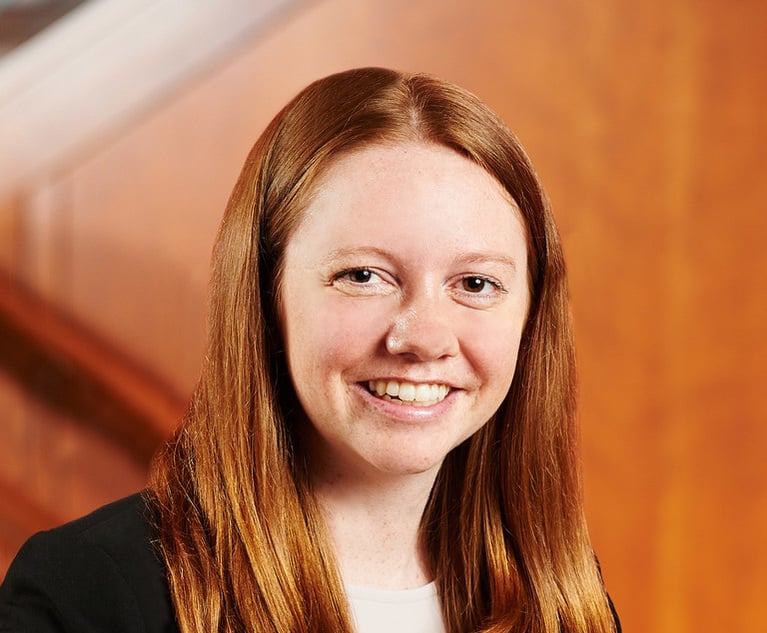 Lindsay Burrill-VanDellen of Berney & Sang. Courtesy photo
Lindsay Burrill-VanDellen of Berney & Sang. Courtesy photo Pa. School Districts Are Hurting: Cyber Charter School Funding Reform Is a Must
Originally, charter schools were created to encourage the use of innovating teaching methods and increase unique educational opportunities for students. They are free to the students who attend. But while charter schools may seem like a harmless alternative to traditional public schools, the way that Pennsylvania funds its charter schools is wreaking havoc on public school districts.
June 13, 2024 at 12:04 PM
7 minute read
Most people have heard of charter schools, but not many people know what exactly they are, how they are funded, or how they impact public school districts in Pennsylvania. Charter schools are independent public schools that are exempt from many traditional public-school mandates—such as being governed by a publicly elected school board—and frequently focus their enrollment and specialize in certain areas, like the performing arts. Originally, charter schools were created to encourage the use of innovating teaching methods and increase unique educational opportunities for students. They are free to the students who attend. But while charter schools may seem like a harmless alternative to traditional public schools, the way that Pennsylvania funds its charter schools is wreaking havoc on public school districts.
Pennsylvania law requires school districts to pay tuition to charter schools for every student residing in the district who enrolls in charter schools each year. See 24 Pa. Stat. Section 17-1725-A(a). As such, approximately 90% of charter school funding comes from public school districts. See "Pennsylvania School Boards Association, A Closer Look," (last visited Jun. 3, 2024). The tuition payments made by school districts are calculated based on a formula set by state law in 2002. Counterintuitively, this formula is not based on what it costs charter schools to provide an education to the students. Rather, it is calculated based on the school districts' own expenses and expenditures. Specifically, tuition is calculated as: the district's total expenditures, divided by the district's average daily membership for the same school year, minus the expenditures for nonpublic school programs; adult education programs; community/junior college programs; student transportation services; special education programs; facilities acquisition, construction and improvement services; and other financing uses. See 24 Pa. Stat. Section 17-1725-A(a); 24 Pa. Stat. Section 25-2501(20).
This content has been archived. It is available through our partners, LexisNexis® and Bloomberg Law.
To view this content, please continue to their sites.
Not a Lexis Subscriber?
Subscribe Now
Not a Bloomberg Law Subscriber?
Subscribe Now
NOT FOR REPRINT
© 2025 ALM Global, LLC, All Rights Reserved. Request academic re-use from www.copyright.com. All other uses, submit a request to [email protected]. For more information visit Asset & Logo Licensing.
You Might Like
View All
State-Sanctioned Discrimination: Title IX’s Expansive Loophole for Religious Institutions
8 minute read
From 'Confusing Labyrinth' to Speeding 'Roller Coaster': Uncertainty Reigns in Title IX as Litigators Await Second Trump Admin
6 minute read
'What Is Certain Is Uncertainty': Patchwork Title IX Rules Face Expected Changes in Second Trump Administration
5 minute readTrending Stories
- 1Uber Files RICO Suit Against Plaintiff-Side Firms Alleging Fraudulent Injury Claims
- 2The Law Firm Disrupted: Scrutinizing the Elephant More Than the Mouse
- 3Inherent Diminished Value Damages Unavailable to 3rd-Party Claimants, Court Says
- 4Pa. Defense Firm Sued by Client Over Ex-Eagles Player's $43.5M Med Mal Win
- 5Losses Mount at Morris Manning, but Departing Ex-Chair Stays Bullish About His Old Firm's Future
Who Got The Work
J. Brugh Lower of Gibbons has entered an appearance for industrial equipment supplier Devco Corporation in a pending trademark infringement lawsuit. The suit, accusing the defendant of selling knock-off Graco products, was filed Dec. 18 in New Jersey District Court by Rivkin Radler on behalf of Graco Inc. and Graco Minnesota. The case, assigned to U.S. District Judge Zahid N. Quraishi, is 3:24-cv-11294, Graco Inc. et al v. Devco Corporation.
Who Got The Work
Rebecca Maller-Stein and Kent A. Yalowitz of Arnold & Porter Kaye Scholer have entered their appearances for Hanaco Venture Capital and its executives, Lior Prosor and David Frankel, in a pending securities lawsuit. The action, filed on Dec. 24 in New York Southern District Court by Zell, Aron & Co. on behalf of Goldeneye Advisors, accuses the defendants of negligently and fraudulently managing the plaintiff's $1 million investment. The case, assigned to U.S. District Judge Vernon S. Broderick, is 1:24-cv-09918, Goldeneye Advisors, LLC v. Hanaco Venture Capital, Ltd. et al.
Who Got The Work
Attorneys from A&O Shearman has stepped in as defense counsel for Toronto-Dominion Bank and other defendants in a pending securities class action. The suit, filed Dec. 11 in New York Southern District Court by Bleichmar Fonti & Auld, accuses the defendants of concealing the bank's 'pervasive' deficiencies in regards to its compliance with the Bank Secrecy Act and the quality of its anti-money laundering controls. The case, assigned to U.S. District Judge Arun Subramanian, is 1:24-cv-09445, Gonzalez v. The Toronto-Dominion Bank et al.
Who Got The Work
Crown Castle International, a Pennsylvania company providing shared communications infrastructure, has turned to Luke D. Wolf of Gordon Rees Scully Mansukhani to fend off a pending breach-of-contract lawsuit. The court action, filed Nov. 25 in Michigan Eastern District Court by Hooper Hathaway PC on behalf of The Town Residences LLC, accuses Crown Castle of failing to transfer approximately $30,000 in utility payments from T-Mobile in breach of a roof-top lease and assignment agreement. The case, assigned to U.S. District Judge Susan K. Declercq, is 2:24-cv-13131, The Town Residences LLC v. T-Mobile US, Inc. et al.
Who Got The Work
Wilfred P. Coronato and Daniel M. Schwartz of McCarter & English have stepped in as defense counsel to Electrolux Home Products Inc. in a pending product liability lawsuit. The court action, filed Nov. 26 in New York Eastern District Court by Poulos Lopiccolo PC and Nagel Rice LLP on behalf of David Stern, alleges that the defendant's refrigerators’ drawers and shelving repeatedly break and fall apart within months after purchase. The case, assigned to U.S. District Judge Joan M. Azrack, is 2:24-cv-08204, Stern v. Electrolux Home Products, Inc.
Featured Firms
Law Offices of Gary Martin Hays & Associates, P.C.
(470) 294-1674
Law Offices of Mark E. Salomone
(857) 444-6468
Smith & Hassler
(713) 739-1250






